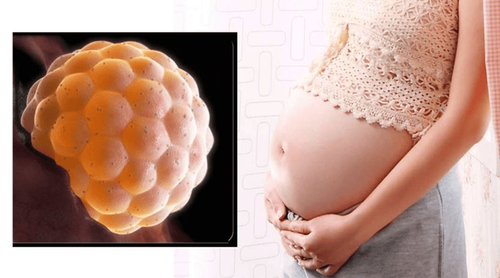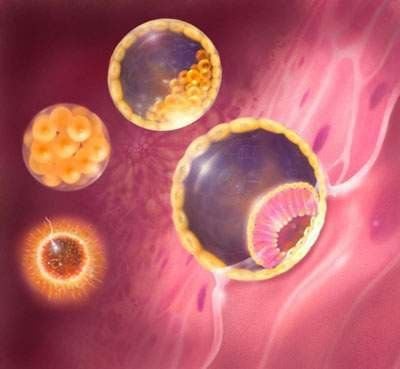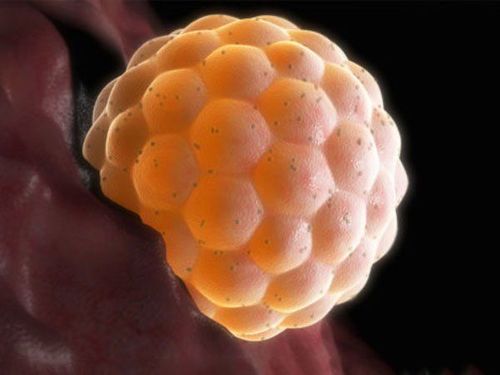This is an automatically translated article.
The article was professionally consulted by Specialist Doctor II Bui Minh Phuc - Department of Obstetrics and Gynecology - Vinmec Ha Long International Hospital. Doctor has more than 18 years working in the field of obstetrics and gynecology.Invasive egg pregnancy is a pathological pregnancy that occurs due to the abnormal development of trophoblasts causing the placenta to become irregularly large and small water sacs. To treat invasive ovum, it is necessary to remove the maximum amount of egg tissue from the body and combine chemotherapy and continuous monitoring.
1. Overview of fetal ovulatory pathology
A normal fetus is usually formed by an ovum and a normal sperm. Therefore, an oocyte is formed by:Abnormal ovum (non-functioning nucleus or no nucleus) fertilization with 1 or 2 sperm at the same time (total ovum). Normal ovum fertilizes with 2 sperms or 1 self-replicating sperm (partial ovum) In ovum, placental cells will show signs of edema, degenerate into water sacs ) about 1mm-30mm stick together in bunches. Partial degeneration of the placenta is called a partial oocyte, and degeneration of all placental cells is called a complete oocyte.
2. Causes of invasive egg pregnancy
Currently, medical science has not found the exact cause of invasive egg pregnancy. However, most studies suggest that the cause may be due to errors in genetic factors during fertilization leading to abnormalities in chromosomes. About 90% of ectopic pregnancies come from the father and 10% from the mother.Invasive egg pregnancy is likely to occur in the following subjects:
Women giving birth under 20 years old and over 40 years old, the fertilization process is prone to abnormalities; People who give birth many times; People with abnormalities in the womb; People with a history of poor fertility; People with low living standards, lack of nutrients (protein, folic acid, vitamin A...); People living in a toxic polluted environment.

Nguyên nhân gây thai trứng xâm lấn do yếu tố di truyền trong quá trình thụ tinh
3. Symptoms of ovum
Initially, people with egg pregnancy also have signs of pregnancy like other normal pregnancies such as missed periods, morning sickness. However, the pregnant woman has the following specific symptoms:People with egg pregnancy often have severe morning sickness, vomiting a lot, vomiting every time they eat, or even vomiting green bile yellow, their body is thin, edematous or swollen. hypertension . Vaginal bleeding that is heavy, persistent (usually between 6 and 16 weeks of pregnancy), black or red, can stop on its own for a short time. Due to a lot of blood loss, pregnant women are often pale, tired, or dizzy. Ultrasound showed an enlarged uterus with gestational age. There are cases where the egg is 2-3 months pregnant but the uterus is as big as 5-6 months pregnant. However, when palpating, it is soft and there is no fetal mass, ultrasound does not show echoes but only images of fluid sacs. Blood tests showed high levels of HCG (>100,000 UI/24h).

Chảy máu âm đạo là triệu chứng phổ biến của thai trứng
4. Complications of pregnancy
Normally, ectopic pregnancy is not dangerous, because about 80% of ovum pregnancies are benign. The disease will be cured after removal of the placenta or hysterectomy in people who do not want to give birth. However, in about 10-15% of cases the ovum becomes invasive and malignant. Invasive ovum will penetrate deeply into the uterine wall causing intra-abdominal bleeding and distant metastases to form dangerous malignant tumors.During the progression of invasive oocyte pregnancy, dangerous complications are likely to appear such as:
Miscarriage of eggs leading to heavy bleeding; Uterine perforation (due to invasive ovum infiltrating the muscular layer of the uterus); Placental cancer (2-3%) progresses rapidly, spreads and moves to many other places such as vagina, brain, liver, lung... causing unpredictable consequences. Squamous cell carcinoma (10-30%) invades the muscularis layer of the uterus causing necrosis, bleeding, and distant metastases to the liver, lung, and brain, making it difficult to treat.
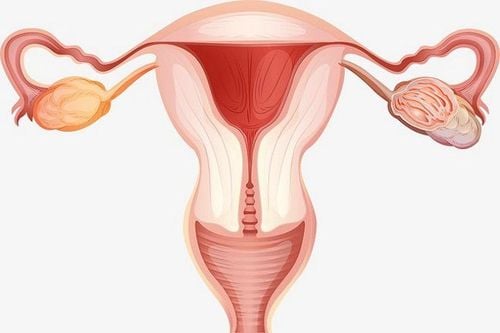
Biến chứng của thai trứng gây thủng tử cung
5. Invasive egg pregnancy treatment
5.1. Methods of treatment of invasive ovum
When the doctor diagnoses and confirms the pregnancy, the first thing is to do the procedure to remove the maximum amount of egg tissue from the body to avoid miscarriage causing bleeding. The technique of ectopic pregnancy aspiration combined with chemical treatment to destroy the malignant fetal tissue.Another effective treatment is a total hysterectomy. For women ≥ 40 years old, have had enough children (≥ 2 children), do not want to have another child, or complications spread widely into the uterus causing heavy bleeding; If the treatment is not effective, a total hysterectomy can be applied without first abortion of the eggs. The purpose of hysterectomy is to reduce the risk of complications into trophoblastic cancer.
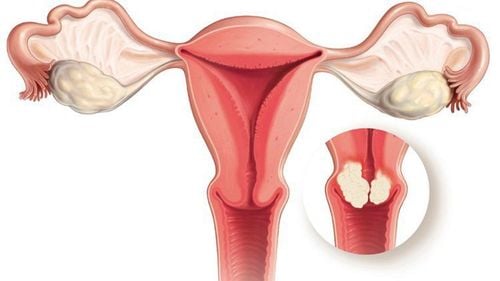
Cắt tử cung toàn phần là một phương hướng điều trị thai trứng xâm lấn
5.2. Follow-up after invasive egg abortion
Patients must be monitored on an outpatient basis, periodically for at least 2 years. Perform blood and urine tests every 2 weeks until the beta HCG level returns to normal. When the HCG index has reached the allowable level, the patient continues to test the urine every 4 weeks for 6 months, combined with ultrasound and other tests (if necessary) to prevent recurrence or distant metastases. . The purpose of monitoring is to detect and promptly handle complications (if any) of pregnancy. During the 2-year follow-up period, the patient was not pregnant. Accordingly, patients should only plan pregnancy when no complications appear. If the patient becomes pregnant again, the patient should also be examined and closely monitored.Invasive pregnancy is a malignancy and is treated like cancer. Patients need to return to the hospital several times to complete the course of treatment. If the disease recurs or metastasizes, it can be life-threatening. Therefore, adherence to treatment and post-treatment follow-up for patients with invasive ovum are essential.
Vinmec International General Hospital is the address for examination, treatment and prevention of diseases, including Obstetrics and Gynecology. When performing the examination process at Vinmec, customers will be welcomed and used modern facilities and machinery along with perfect medical services under the guidance and advice of the doctors. Good doctors, well-trained both at home and abroad.
Especially when visiting and monitoring pregnancy at Vinmec, pregnant women will detect abnormalities in the fetus early (if any). From there, the doctors will consult, examine and give appropriate treatment plan to ensure the health of both mother and fetus.
Customers can directly go to Vinmec Health system nationwide to visit or contact the hotline here for support.
Please dial HOTLINE for more information or register for an appointment HERE. Download MyVinmec app to make appointments faster and to manage your bookings easily.




